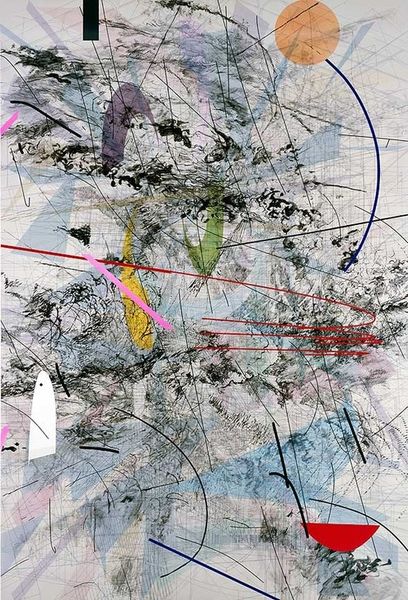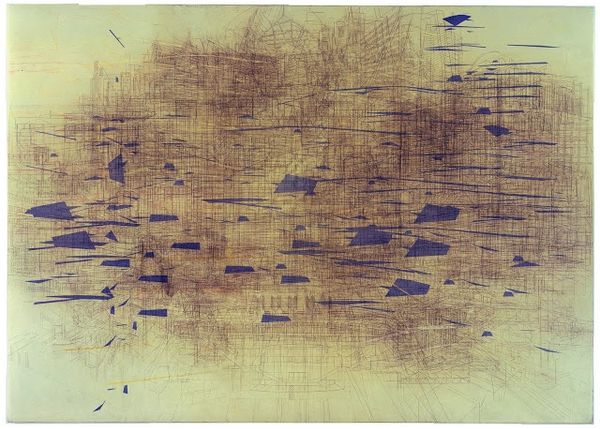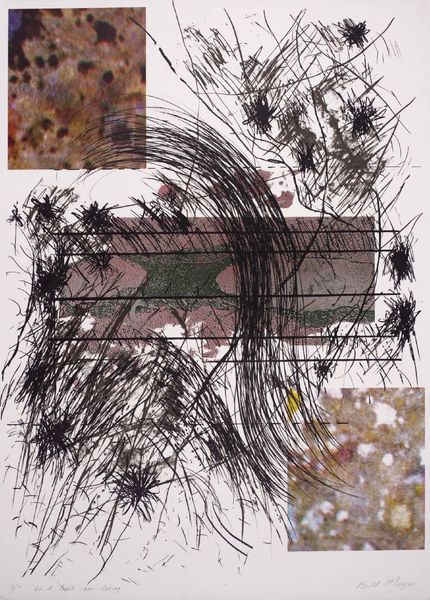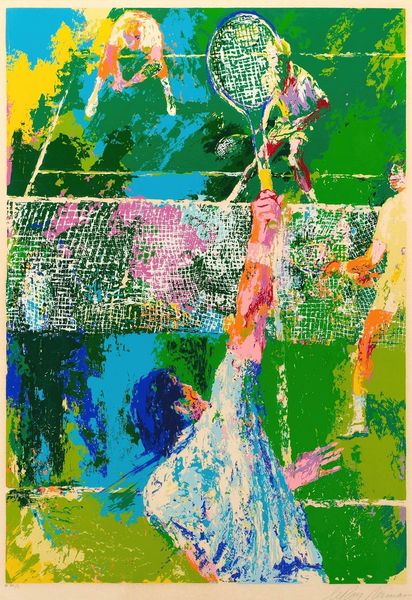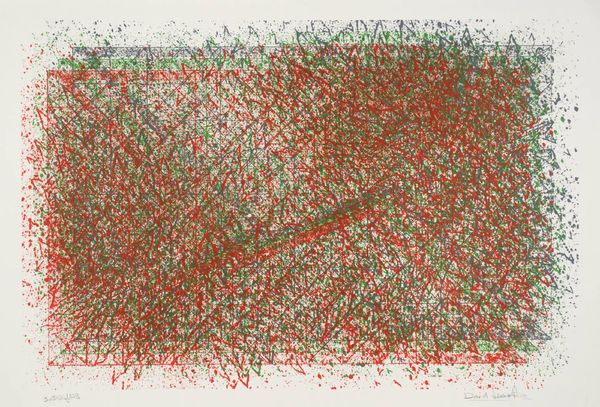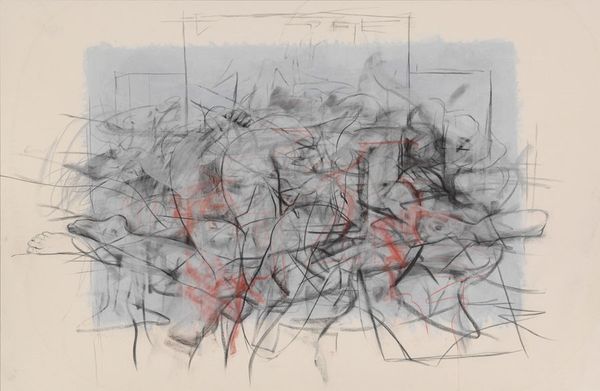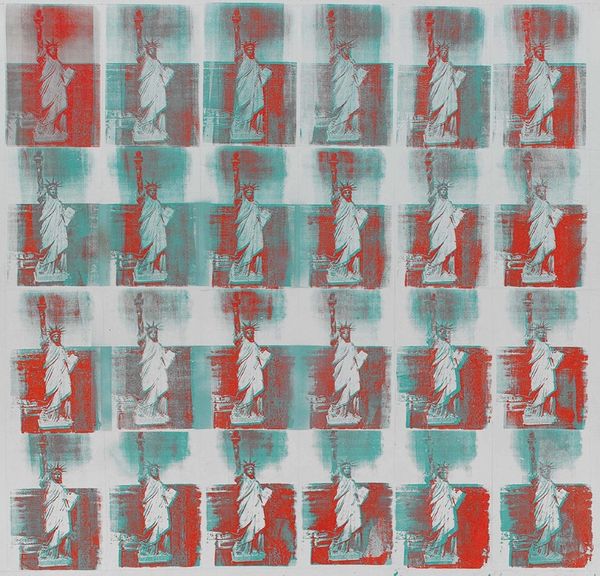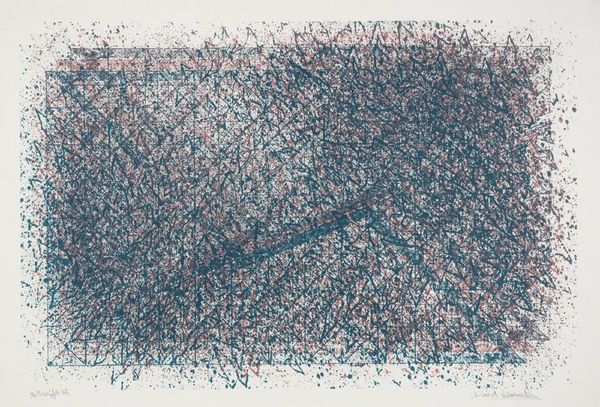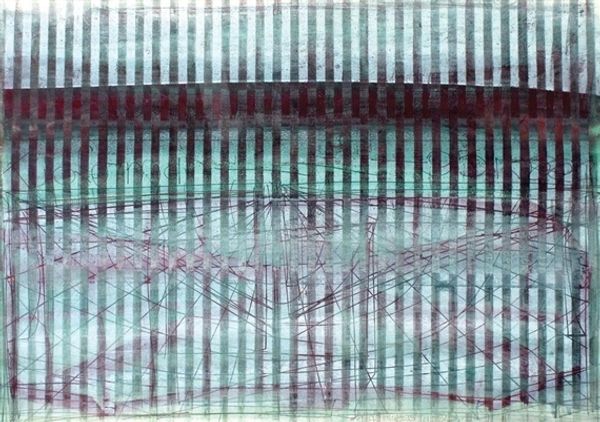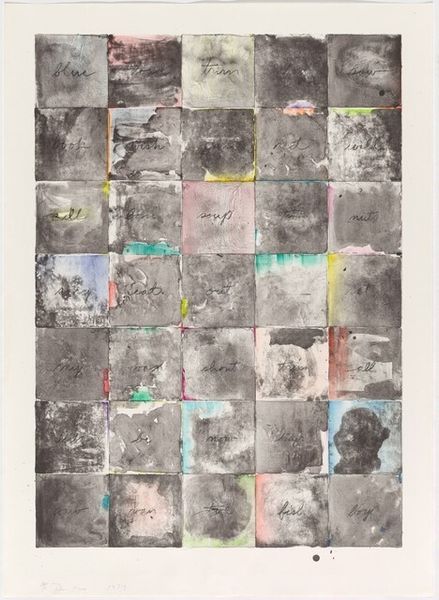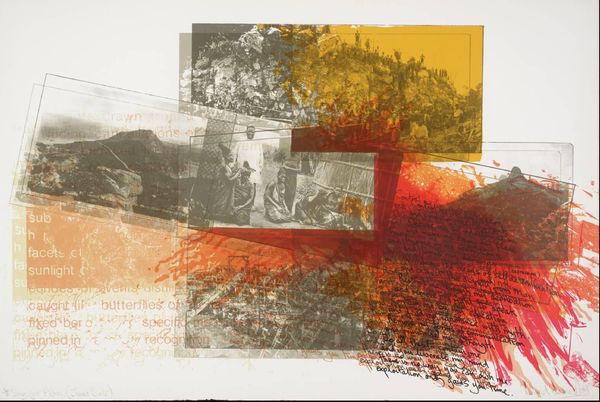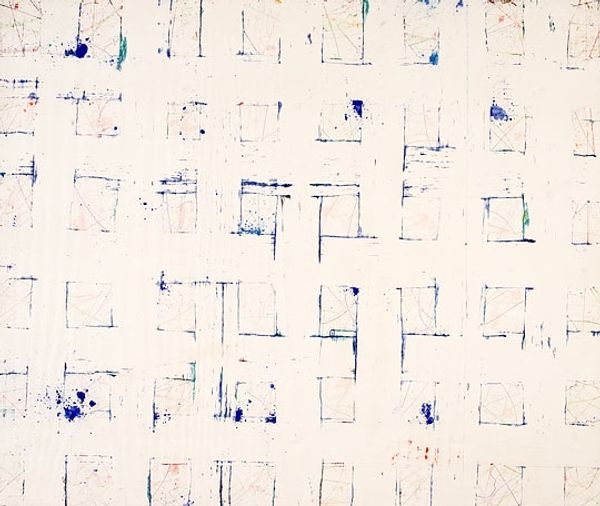
Dimensions: image: 1040 x 752 mm
Copyright: © Bill Meyer | CC-BY-NC-ND 4.0 DEED, Photo: Tate
Editor: This is Bill Meyer's "Stasis into Orgasm," a print from an unknown date held at the Tate. It’s…chaotic. There’s a rigid grid, contrasted with these frantic green and red marks. What symbols or deeper meanings do you see in this interplay? Curator: The grid, a window perhaps, symbolizes control, a rational structure. Yet, the title hints at suppressed energy breaking free. The green strokes could represent growth, or even rage, while the red is the life force, the orgasmic release. Do you sense the tension between order and chaos? Editor: I do. It’s like the architecture is fighting against something primal. Is that a common theme? Curator: Absolutely. Think of earlier works depicting the Garden of Eden, the contrast between cultivated order and nature's untamed power. This print echoes that tension in a modern visual language. Editor: Wow, I never would have made that connection. It's fascinating to see how those symbols evolve. Curator: Indeed, art invites us to decipher these visual codes and unlock deeper cultural narratives.
Comments
tate 7 months ago
⋮
http://www.tate.org.uk/art/artworks/meyer-stasis-into-orgasm-p20225
Join the conversation
Join millions of artists and users on Artera today and experience the ultimate creative platform.
tate 7 months ago
⋮
Gapscape is a portfolio consisting of thirteen prints, produced by the artist in an edition of sixty. Tate owns the artist’s proofs of five of the prints from the suite. Meyer lived in New York and London for seven years during the 1970s. Gapscape was made on his return to his native Melbourne, Australia in 1979.
